AFLATOXIN G1
- CAS NO.:1165-39-5
- Empirical Formula: C17H12O7
- Molecular Weight: 328.27
- MDL number: MFCD28143303
- EINECS: 214-615-9
- SAFETY DATA SHEET (SDS)
- Update Date: 2025-12-16 21:30:20
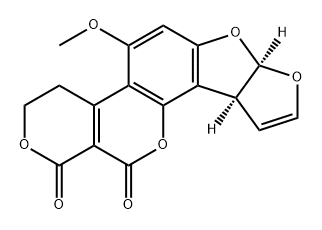
What is AFLATOXIN G1?
Chemical properties
yellow powder
Chemical properties
The aflatoxins are a group of molds produced by the fungus Aspergillus flavus. They are natural contaminants of fruits, vegetables, and grains. They are also described as a series of condensed ring heterocyclic compounds. They form colorless to pale yellow crystals. Practically insoluble in water.
The Uses of AFLATOXIN G1
Aflatoxin G1 is the major analogue of the green fluorescent family of bisfuranocoumarin mycotoxins produced by Aspergillus flavus and related species. Alfatoxins are one of the most potent mycotoxins known but are in fact "pre-toxins", requiring metabolic activation to the toxic principle. Aflatoxins are found widely in nature in trace amounts, particularly in grains and nuts. The toxicity of these metabolites was first recognised in the 1950s and their structures elucidated in 1963. Aflatoxins have been extensively reviewed.
The Uses of AFLATOXIN G1
Aflatoxins B1, B2, G1, G2 as secondary metabolites of fungal species such as Aspergillus flavus or Aspergillus parasiticus growing on a variety of foods (peanuts, nuts, spices, cereals). Aflatoxins a re a group of very carcinogenic mycotoxins with hepatotoxic effects.
The Uses of AFLATOXIN G1
Aflatoxin G1 from Aspergillus flavus has been used as a standard for the determination of aflatoxin in various samples.
Definition
ChEBI: Aflatoxin G is a member of coumarins.
General Description
Certan Vial
Biochem/physiol Actions
Hepatocarcinogen. Food contaminant produced by Aspergillus flavus, a common soil fungus.
Safety Profile
Confirmed human carcinogen with experimental carcinogenic and neoplastigenic data. Poison by ingestion and intraperitoneal routes. Mutation data reported. When heated to decomposition it emits acrid smoke and irritating fumes. See also various aflatoxins
Potential Exposure
Aflatoxins are a group of toxic metabolites produced by certain types of fungi. Aflatoxins are not commercially manufactured; they are naturally occurring contaminants that are formed by fungi on food during conditions of high temperatures and high humidity. Most human exposure to aflatoxins occurs through ingestion of contaminated food. The estimated amount of aflatoxins that Americans consume daily is estimated to be 0.15 0.50 μg. Grains, peanuts, tree nuts, and cottonseed meal are among the more common foods on which these fungi grow. Meat, eggs, milk, and other edible products from animals that consume aflatoxincontaminated feed may also contain aflatoxins. Aflatoxins can also be breathed in
Shipping
UN3172 Toxins, extracted from living sources, solid or liquid, Hazard Class: 6.1; Labels: 6.1-Poisonous materials, Technical Name Required. UN2811 Toxic solids, organic, n.o.s., Hazard Class: 6.1; Labels: 6.1-Poisonous materials, Technical Name Required.
Incompatibilities
Incompatible with oxidizers (chlorates, nitrates, peroxides, permanganates, perchlorates, chlorine, bromine, fluorine, etc.); contact may cause fires or explosions. Keep away from alkaline materials, strong bases, strong acids, oxoacids, epoxides.
Waste Disposal
Consult with environmental regulatory agencies for guidance on acceptable disposal practices. Generators of waste containing this contaminant (≥100 kg/mo) must conform with EPA regulations governing storage, transportation, treatment, and waste disposal. Use of oxidizing agents, such as hydrogen peroxide or 5% sodium hypochlorite bleach. Acids and bases may also be used.
Properties of AFLATOXIN G1
| Melting point: | 244-246 °C |
| Boiling point: | 386.03°C (rough estimate) |
| alpha | D -556° (chloroform) |
| Density | 1.3358 (rough estimate) |
| refractive index | 1.4790 (estimate) |
| Flash point: | -11 °C |
| storage temp. | 2-8°C |
| solubility | DMF: Soluble; DMSO: Soluble; Ethanol: Soluble; Methanol: Soluble |
| form | Solid |
| form | neat |
| color | White to off-white |
| Water Solubility | 15mg/L(temperature not stated) |
| BRN | 1299768 |
| EPA Substance Registry System | Aflatoxin G1 (1165-39-5) |
Safety information for AFLATOXIN G1
| Signal word | Danger |
| Pictogram(s) |
 Flame Flammables GHS02  Exclamation Mark Irritant GHS07  Health Hazard GHS08 |
| GHS Hazard Statements |
H225:Flammable liquids H304:Aspiration hazard H315:Skin corrosion/irritation H319:Serious eye damage/eye irritation H340:Germ cell mutagenicity H350:Carcinogenicity H372:Specific target organ toxicity, repeated exposure H412:Hazardous to the aquatic environment, long-term hazard |
| Precautionary Statement Codes |
P210:Keep away from heat/sparks/open flames/hot surfaces. — No smoking. P273:Avoid release to the environment. P331:Do NOT induce vomiting. P301+P310:IF SWALLOWED: Immediately call a POISON CENTER or doctor/physician. P303+P361+P353:IF ON SKIN (or hair): Remove/Take off Immediately all contaminated clothing. Rinse SKIN with water/shower. P305+P351+P338:IF IN EYES: Rinse cautiously with water for several minutes. Remove contact lenses, if present and easy to do. Continuerinsing. |
Computed Descriptors for AFLATOXIN G1
New Products
Indole Methyl Resin tert-butyl 9-methoxy-3-azaspiro[5.5]undecane-3-carboxylate Boc-His(Boc)-OH 2-CTC Resin 4-Chloro-7-tosy1-7Hpyrrolo[2,3-d]pyrimidine 5,7-Dibromo-1H-indole 2,5-dichloro-N-hydroxy-4,6-dimethylpyridine-3-carboximidamide 2,2-Dimethoxy-7-azaspiro[3.5]nonane hydrochloride 4-chloromethyl-5-methyl-1,3-dioxol-2-one (DMDO-Cl) R-2-BENZYLOXY PROPIONIC ACID 1,1’-CARBONYLDIIMIDAZOLE 1,1’-CARBONYLDI (1,2-4 TRIAZOLE) N-METHYL INDAZOLE-3-CARBOXYLIC ACID 4-((2-hydroxyethyl)thio)benzoic acid 1-(TERT-BUTOXYCARBONYL)-2-PYRROLIDINONE Methyl 6-methylnicotinate 3-Pyridineacrylic acid tert-Butyl carbazate TETRAHYDRO-2H-PYRAN-3-OL 2-((4-morpholinophenylamino) (methylthio) methylene) malononitrile 3-(4-morpholinophenylamino)-5-amino-1H-pyrazole-4-carbonitrile 2,4-dihydroxybenzaldehyde 1,3-Diethyl-1,3-Diphenylurea Methyl 2-methylquinoline-6-carboxylateRelated products of tetrahydrofuran
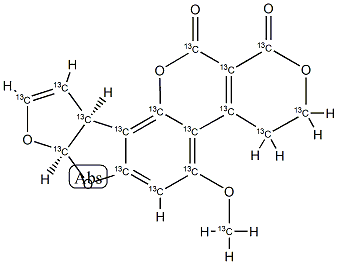
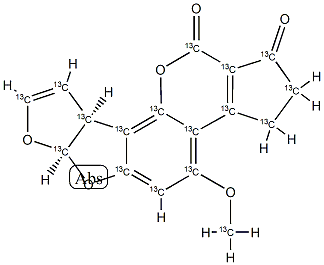
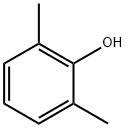



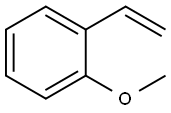
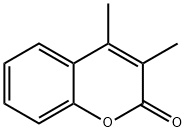
You may like
-
 Aflatoxin G1 CAS 1165-39-5View Details
Aflatoxin G1 CAS 1165-39-5View Details
1165-39-5 -
 Aflatoxin G1 solution CAS 1165-39-5View Details
Aflatoxin G1 solution CAS 1165-39-5View Details
1165-39-5 -
 Aflatoxin G1 solution CAS 1165-39-5View Details
Aflatoxin G1 solution CAS 1165-39-5View Details
1165-39-5 -
 Aflatoxin G1 solution CAS 1165-39-5View Details
Aflatoxin G1 solution CAS 1165-39-5View Details
1165-39-5 -
 Aflatoxin G1 CAS 1165-39-5View Details
Aflatoxin G1 CAS 1165-39-5View Details
1165-39-5 -
 Pyridine 99.5% HPLC /UV SpectroscopyView Details
Pyridine 99.5% HPLC /UV SpectroscopyView Details
110-86-1 -
 Dibutyl PhthalateView Details
Dibutyl PhthalateView Details
84-74-2 -
 Thiourea 99% ARView Details
Thiourea 99% ARView Details
62-56-6
